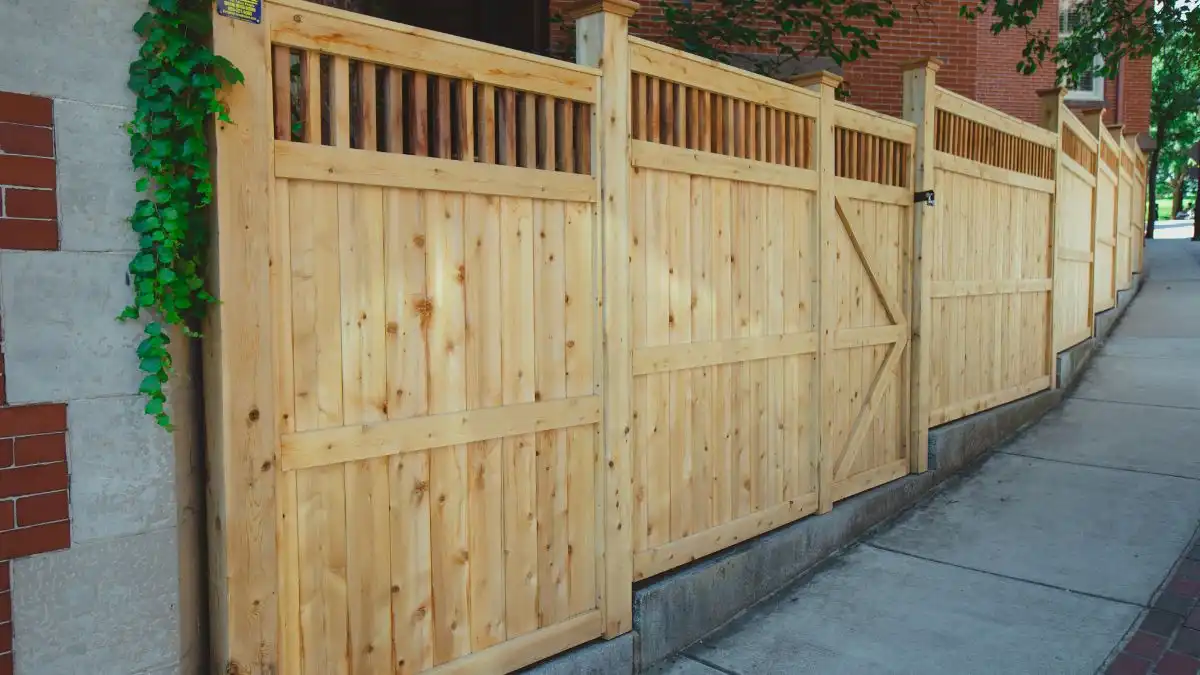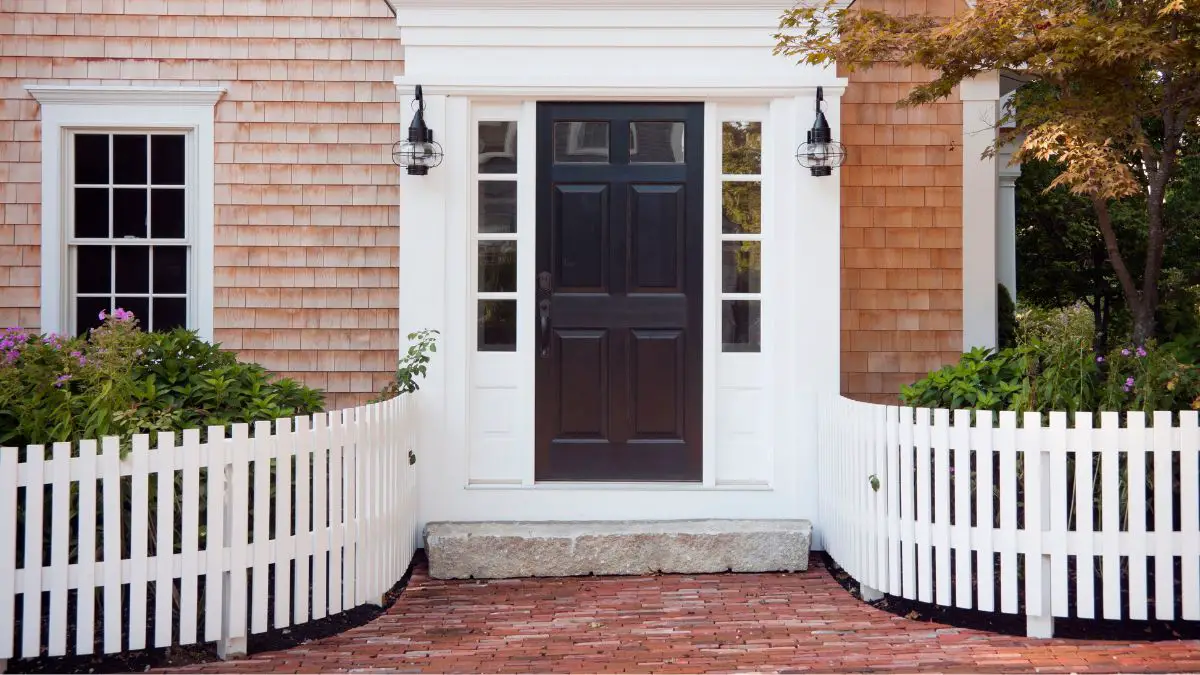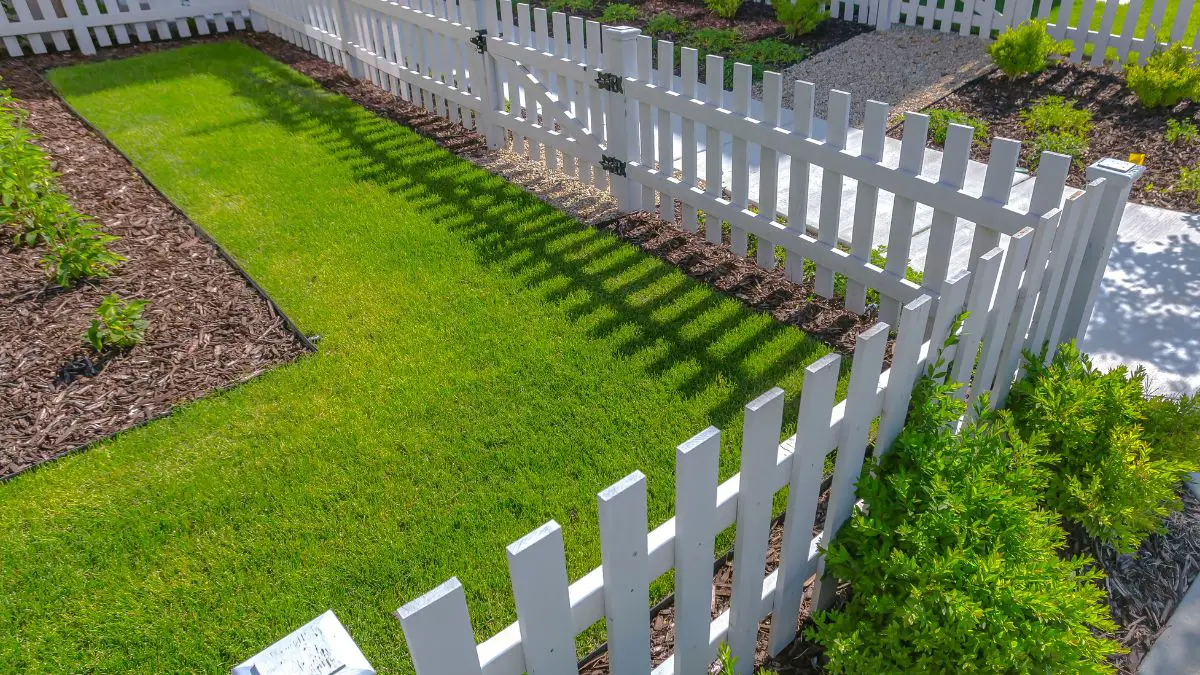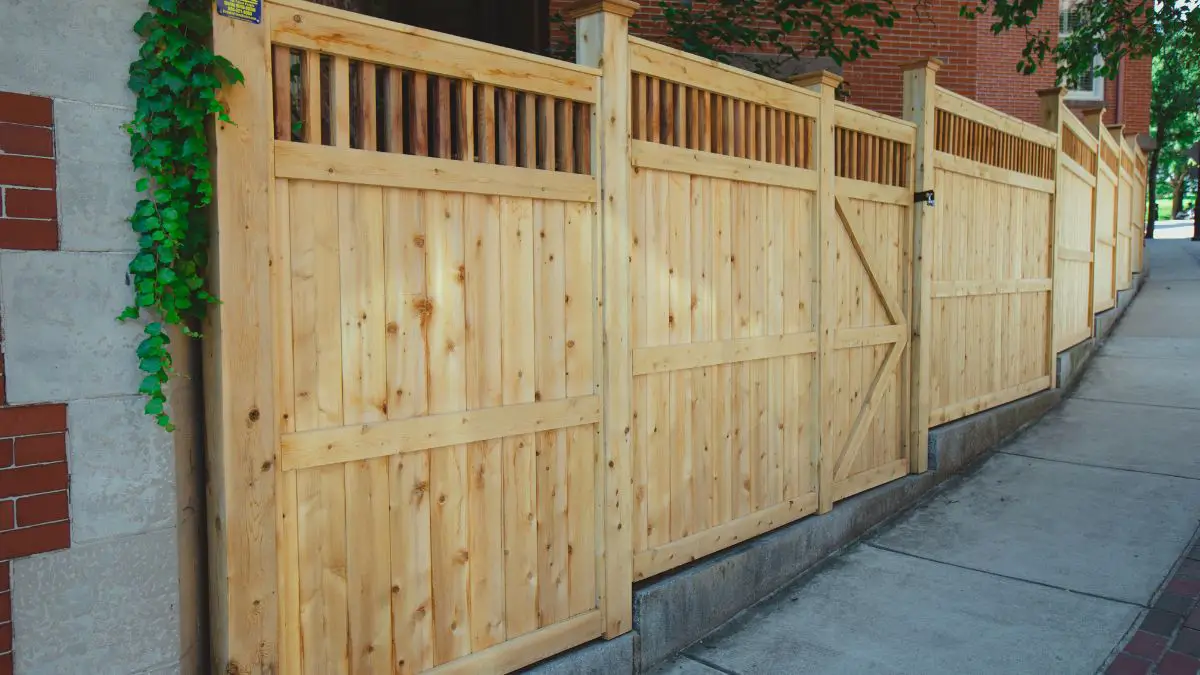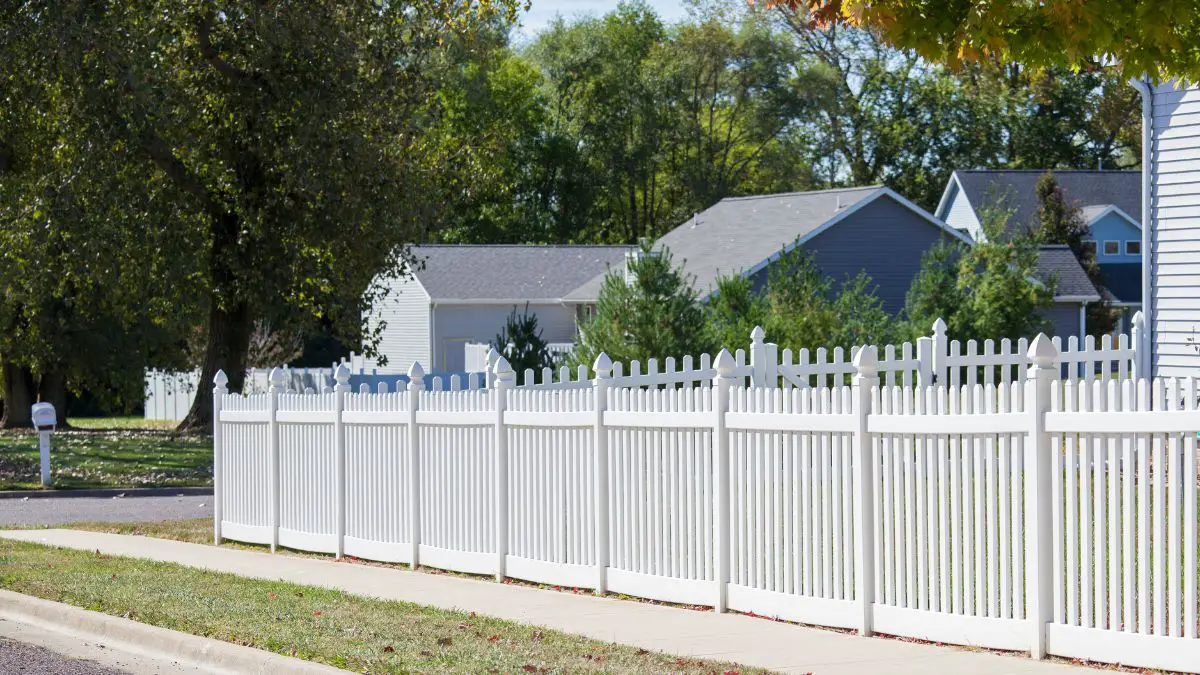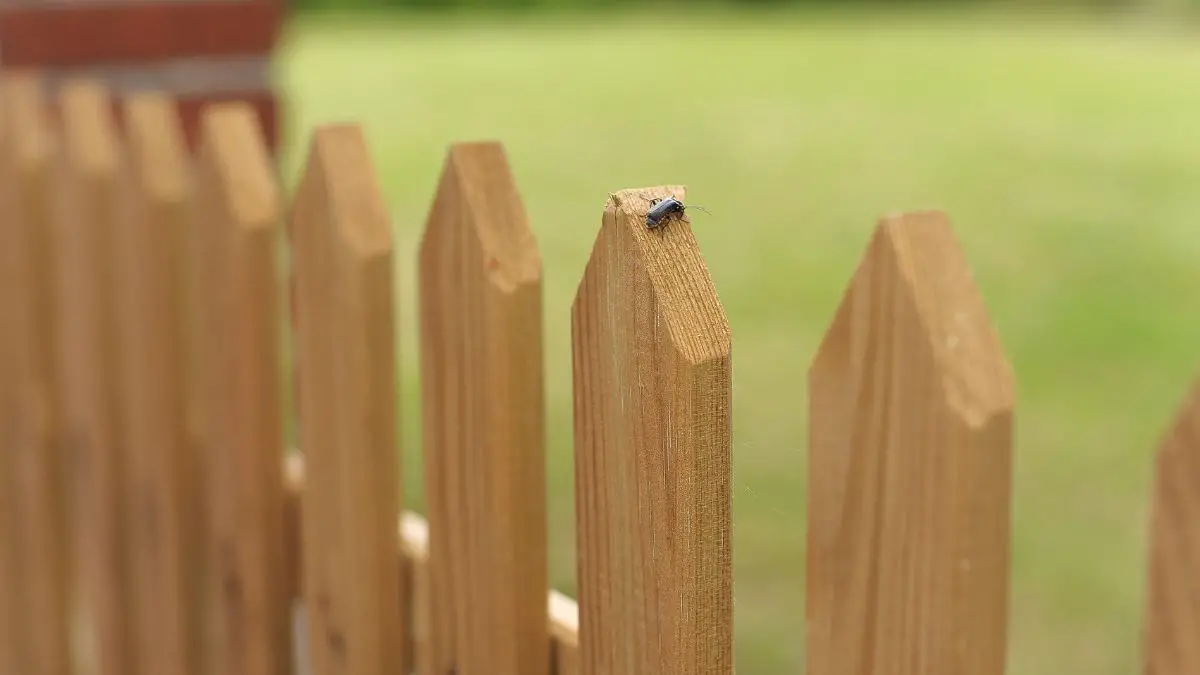Wood fences are more than just a boundary for your property. They provide privacy, add aesthetic appeal, and increase the value of your home. But, like all things, they don’t last forever.
The lifespan of your wood fence depends on several factors, including the type of wood used, the weather conditions it’s exposed to, and how well it’s maintained.
Wood fences can last 4 to 30 years, depending on the type of lumber used. Pine and spruce fences are cost-effective options with a lifespan of 4-12 years and 4-7 years, respectively, while cedar and redwood fences, though more expensive, can last up to 30 years due to their natural resistance to rot and pests.
In this comprehensive guide about how long do wood fences last, we’ll delve into the lifespan of different types of wood fences, from cedar to pine, redwood to spruce. We’ll explore the factors that affect their durability and provide tips on increasing their longevity.
| Key Takeaways |
|---|
| Different types of wood have varying lifespans; redwood and cedar tend to last the longest. |
| The quality of wood, weather conditions, maintenance practices, and installation process all affect the lifespan of a wood fence. |
| Proper installation is crucial for the longevity of a wood fence. |
| Regular maintenance, including cleaning, sealing, and repairing, can significantly extend the lifespan of a wood fence. |
| Protective sealants shield wood fences from moisture and UV damage. Addressing damage promptly, especially rot and pest damage, can prevent further deterioration. |
Get FREE quotes from local fence contractors in your area today. Whether you need wood, vinyl, or metal fencing - We Can Help! All Contractors are screened, licensed, and insured.
Types of Wood Used in Fences and Their Lifespan
Pine: Lifespan and Characteristics
Pine is a popular choice for wood fences due to its affordability and availability. It’s a softwood that’s easy to work with, making it ideal for DIY fence projects. However, pine’s lifespan isn’t as long as some other types of wood. On average, a pine fence lasts between 5 to 12 years.
Pine Has Some Appealing Characteristics:
- It’s cost-effective, making it a good choice for large fencing projects.
- Pine is easy to paint or stain, allowing you to customize the look of your fence.
- It’s lightweight, which makes installation easier.
- Pressure-treated pine has increased resistance to rot and pests.
Cedar: Lifespan and Characteristics
Cedar is another common choice for wood fences. It’s a bit more expensive than pine but offers a longer lifespan. A cedar fence can last anywhere from 15 to 30 years, depending on the conditions it’s exposed to and how well it’s maintained.
Here are Some Notable Characteristics of Cedar:
- Cedar naturally repels insects, reducing the risk of pest damage.
- It’s resistant to decay and rot, contributing to its longer lifespan.
- Cedar has a beautiful, rich color and a pleasant, natural aroma.
- It’s more stable than many other types of wood, meaning it’s less likely to warp or shrink.
Redwood: Lifespan and Characteristics
Redwood is considered a premium fencing material due to its beauty and durability. It’s the most expensive of the woods we’re discussing but has the longest lifespan. A well-maintained redwood fence can last up to 30 years or more.
Here’s What Makes Redwood Stand Out:
- It’s highly resistant to rot, decay, and insect damage.
- Redwood has a distinct, vibrant beautiful color option that many home or property owners find appealing.
- It’s a stable wood that resists warping and shrinking.
- Redwood requires less maintenance than many other wood types.
Spruce: Lifespan and Characteristics
Spruce is a cost-effective fencing option for wood fences, similar to pine. However, it doesn’t have as long a lifespan. A spruce fence typically lasts between 4 to 7 years.
Despite Its Shorter Lifespan, Spruce has Some Benefits:
- It’s affordable, making it a good choice for large fencing projects.
- Spruce has a light color that can be easily painted or stained.
- It’s relatively easy to install due to its lightweight.
- Spruce is readily available at most home improvement stores.
Each type of wood has its own set of characteristics and lifespan, and the best choice for your fence depends on your budget, aesthetic preferences, and proper maintenance capabilities. By understanding the lifespan and characteristics of these woods, you can make an informed decision when choosing the fence material.
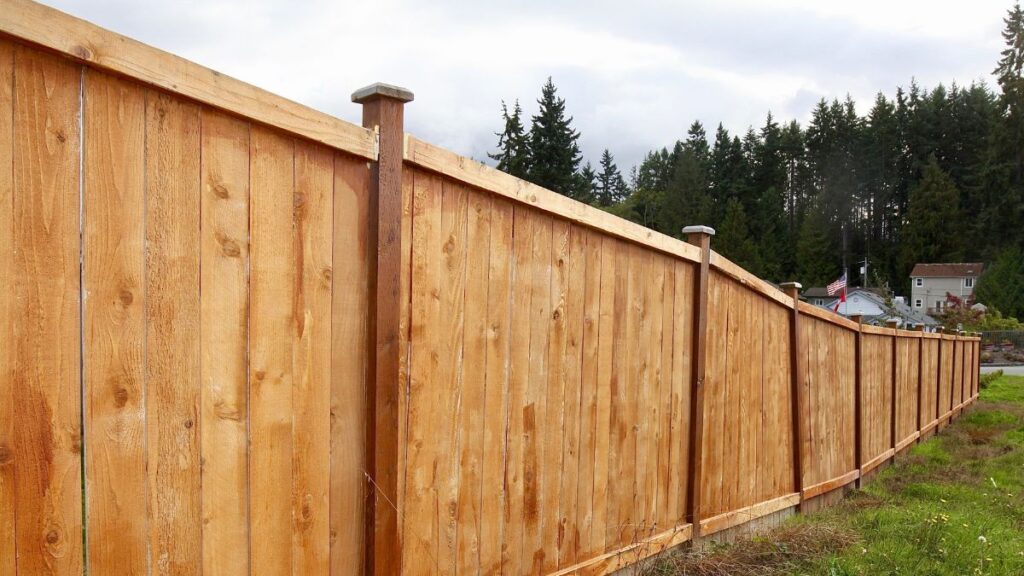
Factors Affecting the Lifespan of Wood Fences
Understanding the factors that affect the lifespan of your wood fence is crucial to ensuring its longevity. Let’s look at these factors and see how they impact your fence’s durability.
Quality of Wood
The wood quality you choose for your fence significantly affects its lifespan. High-quality woods like cedar and redwood naturally resist rot and pests, contributing to their longer lifespans. On the other hand, lower-quality woods like pine and spruce may not last as long, especially if they aren’t treated to resist rot and pests.
When selecting wood for your fence, consider these points
- Choose high-quality wood for a longer-lasting fence.
- Consider pressure-treated woods for increased resistance to rot and pests.
- Remember that higher-quality woods may cost more upfront but can save money in the long run due to their longer lifespan.
Weather Conditions
Your fence’s exposure to harsh weather conditions significantly impacts its lifespan. Rain, snow, humidity, and extreme temperatures can affect your wood fence.
Here’s how weather conditions affect your fence
- Excessive moisture from rain or humidity can cause wood to rot.
- Extreme heat can cause wood to dry out and crack.
- Cold temperatures and snow can cause wood to contract and expand, leading to warping or splitting.
- Regularly inspect your fence after adverse weather conditions to identify and address any damage promptly.
Maintenance Practices
Regular maintenance is key to extending the lifespan of your wood fence. This includes cleaning, sealing, staining, and repairing your fence as needed.
Consider these fence maintenance practices
- Clean your fence annually to remove dirt, mildew, and algae.
- Seal or stain your fence every 2-3 years to protect it from moisture and UV damage.
- Promptly repair any damage to prevent it from worsening.
- Regularly inspect your fence for signs of rot, pests, or other damage.
Installation Process
A properly installed fence will last longer than one that’s poorly installed. The installation process affects the stability of your fence and its ability to withstand weather conditions and other stresses.
Keep these points in mind during the installation process
- Ensure posts are properly set and secured in the ground.
- Use high-quality fasteners to prevent rust and corrosion.
- Make sure the fence is level and straight to prevent leaning or sagging.
- Consider hiring a professional to ensure proper installation.
By understanding these factors and how they affect the lifespan of your wood fence, you can take steps to mitigate their impact. Whether choosing high-quality wood, protecting your fence from extreme weather conditions, maintaining your fence regularly, or ensuring proper installation, each step you take contributes to a longer-lasting wood fence.
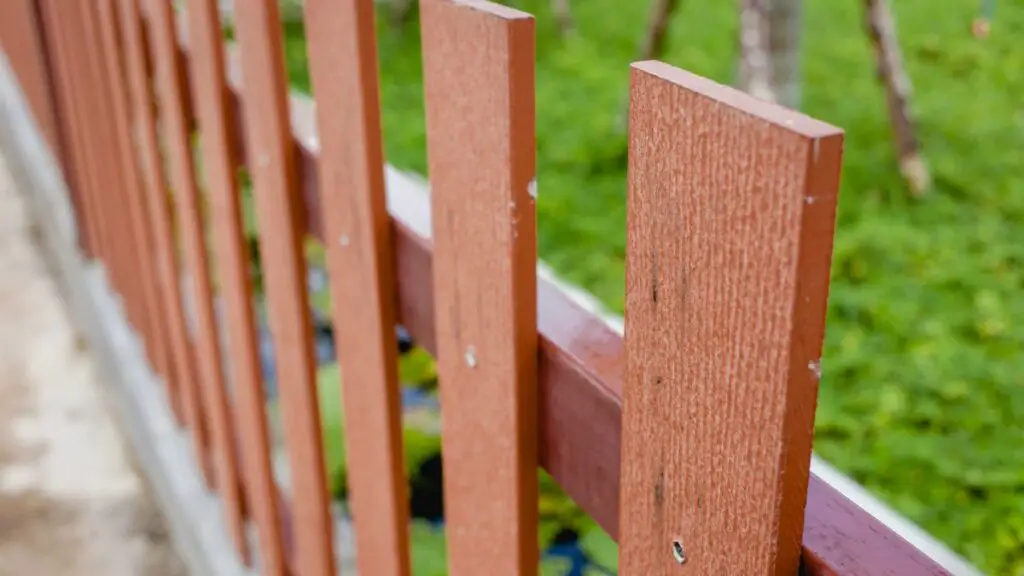
How to Increase the Lifespan of Your Wood Fence
A wood fence is a significant investment; naturally, you want it to last as long as possible. Here are some effective strategies to increase the lifespan of your wood fence.
Proper Installation
The first step to a long-lasting wood fence is proper installation. A well-installed fence can withstand weather conditions, resist leaning or sagging, and generally last longer. Here’s how to ensure proper installation:
- Use quality materials: High-quality wood and durable fasteners can significantly increase the lifespan of your fence.
- Secure the posts: The fence posts should be set deep enough into the ground and secured with concrete for stability.
- Ensure proper alignment: The fence should be level and straight to prevent leaning or sagging over time.
- Consider professional installation: If you’re not confident in your DIY skills, consider hiring a professional. They have the expertise to ensure the fence is installed correctly.
Regular Maintenance
Regular maintenance is crucial to keep your wood fence in good condition and prolong its lifespan. Here’s what regular maintenance entails:
- Cleaning: Clean your fence at least once a year to remove dirt, algae, and mildew.
- Inspection: Regularly inspect your fence for signs of damage, rot, or pest infestation.
- Repair: Promptly repair any damage you find during your inspections. This can prevent small issues from turning into major problems.
Use of Protective Sealants
Protective sealants can shield your wood fence from moisture, UV rays, and other damaging elements. Here’s how to use them:
- Choose the right sealant: Look for a sealant specifically designed for outdoor wood and offers UV protection.
- Apply sealant properly: Follow the manufacturer’s instructions for application. Generally, you’ll need to apply the sealant with a brush or sprayer and allow it to dry completely.
- Reapply regularly: Most sealants must be reapplied every 2-3 years. However, check the manufacturer’s recommendations for the specific product you’re using.
Addressing Damage Promptly
Even with proper installation and regular maintenance, your wood fence may still sustain damage. The key is to address this damage promptly. Here’s how:
- Repair small damages: Small issues like loose boards or minor cracks can be repaired easily. Address these issues promptly to prevent them from worsening.
- Replace damaged sections: If a section of your fence is severely damaged, it may be best to replace it. This can prevent the damage from spreading to other parts of the fence.
- Treat for pests: If you notice signs of pest infestation, treat your fence as soon as possible. Pests can cause significant damage if left unchecked.
By following these strategies, you can significantly increase the lifespan of your wood fence. Remember, a well-cared-for wood fence not only lasts longer but also enhances the beauty and value of your property.
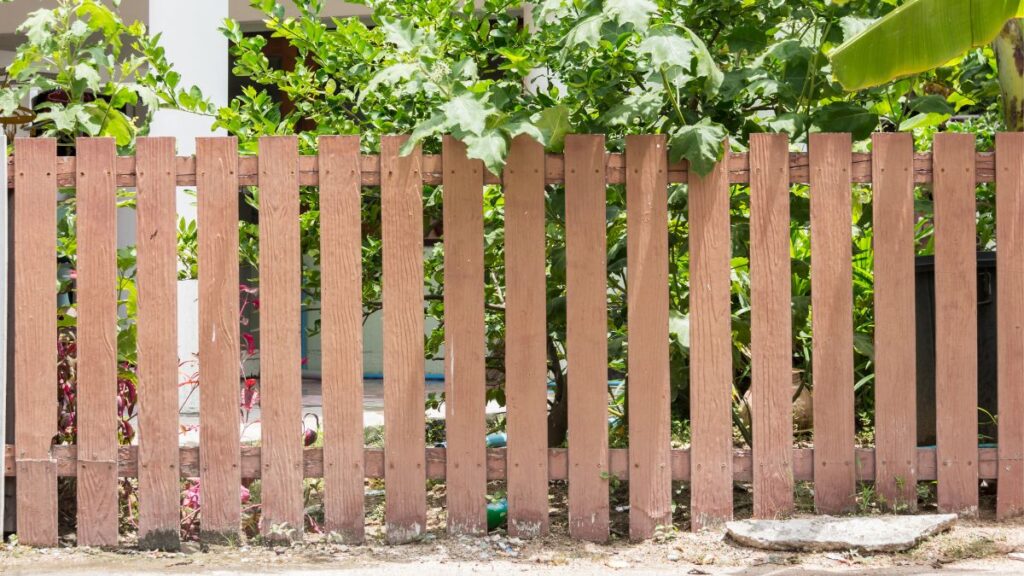
Signs Your Wood Fence Needs Replacement
Even with the best care and maintenance, there comes a time when your wood fence may need to be replaced. Recognizing the signs of a failing fence can help you take action before it’s too late. Here are some key indicators that your wood fence may need replacement.
Rot and Decay
Rot and decay are common issues with wood fences, especially if they are improperly maintained. Here’s how to spot them:
- Check for soft or crumbly wood: Rot often makes wood soft or crumbly. If you can easily break off a piece of wood with your hand, it’s likely rotten.
- Look for discoloration: Rot often causes wood to discolor. It could be a sign of rot if you notice dark or discolored areas on your fence.
- Inspect for fungus: Fungus, like mushrooms or mold, can indicate rot. If you see fungus growing on your fence, it’s likely rotting from within.
Leaning or Falling Panels
Leaning or falling fence panels can clearly indicate that your wood fence needs replacement. Here’s what to look for:
- Check for leaning posts: If your fence posts are leaning, it could indicate they’re no longer securely anchored in the ground.
- Inspect for loose or falling panels: Panels that are loose or falling off can be a sign of a failing fence. This could be due to rot, pest damage, or simply age.
Extensive Damage from Pests
Pests can cause significant damage to wood fences. Here’s how to spot pest damage:
- Look for holes or tunnels: Many pests, like termites and carpenter ants, create holes or tunnels in wood. It could be a sign of pest damage if you notice these on your fence.
- Check for sawdust or frass: Pests often leave behind sawdust or frass (insect waste) when they damage the wood. If you see this around your fence, it could indicate a pest problem.
If you notice any of these signs, it may be time to replace your wood fence. While it can be a significant undertaking, replacing a failing fence can protect your property, maintain your privacy, and enhance the beauty of your outdoor space.
FAQs About How Long Do Wood Fences Last
How often should I seal my wood fence?
Wood fence sealing should be done every 2-3 years, although the frequency may differ based on sealant type, local climate, and fence exposure. It is crucial to adhere to the manufacturer’s instructions for the chosen sealant.
Can a leaning wood fence be repaired?
A leaning wooden fence can usually be repaired, depending on the severity and cause. Loose or damaged posts can be straightened and reinforced. Replacing the affected sections may be necessary if there is rot or extensive damage. In severe cases, the entire fence may need replacement.
How can I protect my wood fence from pests?
To protect your wooden fence from pests, choose pest-resistant wood like cedar or redwood, apply a protective sealant, conduct regular inspections, and consider professional pest control services for severe cases.
What is the best type of wood for a fence in terms of longevity?
Redwood and cedar are highly regarded due to their natural resistance to rot and pests. They are more expensive, though. If you’re on a budget, pressure-treated pine or spruce can be a cost-effective alternative. These woods are treated to resist rot and pests, increasing their lifespan.
Conclusion
In this comprehensive guide, we’ve explored the lifespan of different types of wood fences, from cost-effective pine to premium redwood. You’ve learned about the factors that affect the durability of your fence, including the quality of wood, weather conditions, maintenance practices, and installation process.
We’ve also shared strategies to increase the lifespan of your wood fence, from proper installation and regular maintenance to the use of protective sealants and prompt damage repair. And we’ve answered some of your most pressing questions about wood fences.
Remember, a well-maintained wood fence not only lasts longer but also enhances the beauty and value of your property. By understanding the lifespan of your wood fence and how to extend it, you can make the most of this valuable investment. Here’s to many years of enjoying your beautiful, durable wood fence!


